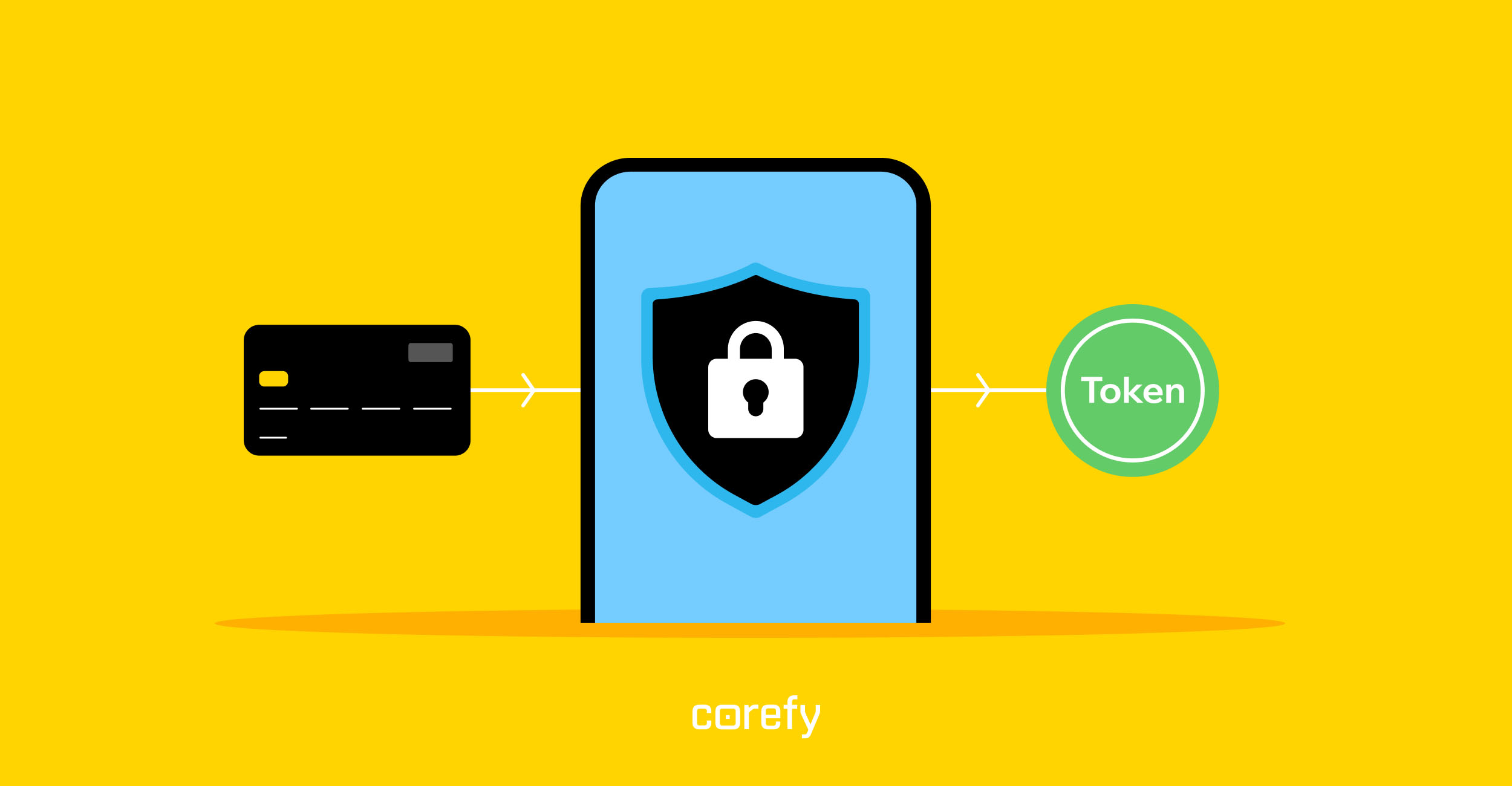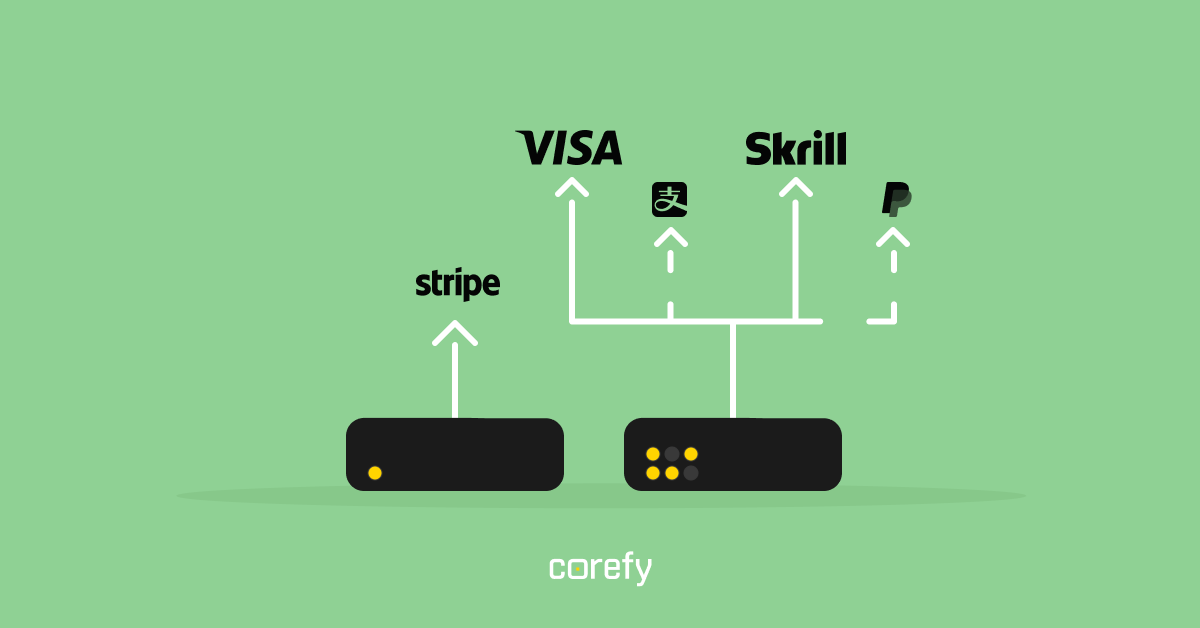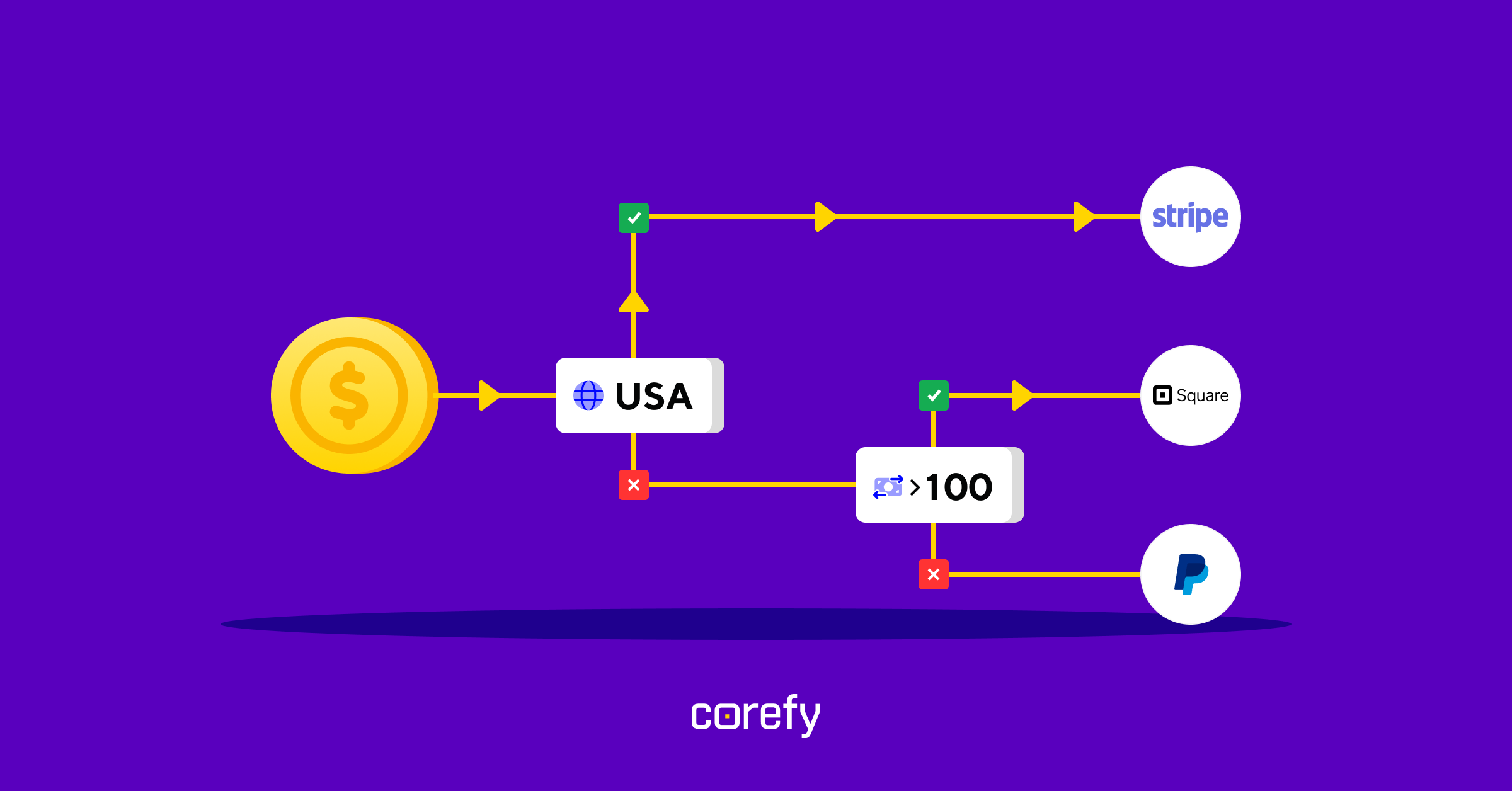People’s preferred ways to pay vary considerably worldwide, affected by multiple factors: internet and banking services accessibility, smartphone penetration rate, economic and financial situation, and even people’s mentality.
Despite these differences, a clear global trend has emerged: traditional payment methods like cash and bank cards are declining in favour of alternative options, including digital wallets, mobile solutions, and bank transfers.
We've conducted thorough research to compile a list of the most popular payment methods in the three most populous countries across six continents. This quick, no-nonsense guide will help you make smart choices for your business expansion.
The most popular payment methods in North America
North America, with its population of over 612 million, boasts extensive access to the banking system and high internet and smartphone penetration rates. Let's take a closer look at the payment preferences in the most populated countries.

USA
- In the USA, debit and credit cards reign supreme, making up 71% of all consumer spending in 2023. The leading card brands are Visa, Mastercard, and American Express.
- A notable trend is the increasing use of digital wallets, the fastest-growing payment method in the US. Popular options include Apple Pay, PayPal, and Amazon Pay.
Canada
- Canadians also favour debit and credit cards, with the latter accounting for approximately 50% of total consumer spending in 2023. The top card brands are Visa, Mastercard, and Interac.
- Digital wallets are gaining traction, comprising 27% of e-commerce and 12% of point-of-sale (POS) spending in 2023. Apple Pay and PayPal are leading the way.
Mexico
- Cash is still king in Mexico, accounting for an estimated 38% of POS transaction value in 2023. In general, an estimated 82% of Mexican consumers use cash for payments.
- As for e-commerce, credit cards (33%) and digital wallets (28%) are leading the way. The popular alternative payment options include PayPal, Mercado Pago, and Cashi.
The most common payment options in Latin America
Latin America accounts for about 8.14 % of the global population and is home to 656 million inhabitants. It’s a developing region that gradually gains traction and attracts entrepreneurs from all over the world. The payment market of this region has its specificities that a business should consider. Here are some details on three countries to give you a hint.

Brazil
- While credit cards are still prevalent (40%), Brazilians are increasingly opting for A2A payments. In 2022-2023, they grew by a remarkable 49%, accounting for 30% of e-commerce transaction value.
- Pix quickly grew to become Brazil’s most popular alternative payment method by number of transactions. PicPay and Boleto follow closely.
Colombia
- Colombian consumers remain among the world’s biggest users of cash.
- E-commerce customers prefer credit cards (27%) and A2A payments (25%) nearly equally.
- Colombia’s most popular wallet is Nequi.
Argentina
- Credit cards continue to be popular, making up 35% of all e-commerce transactions in 2023.
- Digital wallets are on track to become Argentina’s leading e-commerce payment method by 2024. 63% of Argentine consumers identified Mercado Pago as their primary digital wallet.
Widespread payment methods in Europe
Europe, with 44 countries and nearly 750 million people, is a hub of prosperity, business, and innovation. So, how do Europeans prefer to pay? Let's explore the payment trends in three key countries.

Turkey
- In Turkey, credit cards dominate both online and in-store transactions. Despite this, cash still plays a significant role in the payment landscape.
- Digital wallet adoption is slower, with wallets making up 16% of e-commerce transactions. Notable alternative methods include Maximum, BKM Express, and Paycell.
Germany
- Digital wallets are the fastest-growing online payment method in Germany, driven largely by PayPal's popularity, accounting for 32% of e-commerce transaction value in 2023.
- Account-to-account (A2A) transfers are gaining traction, representing 24% of e-commerce transactions.
- Buy Now Pay Later (BNPL) is a popular alternative to credit cards, making up 21% of e-commerce transaction value in 2023.
- For in-person payments, debit cards (38%) and cash (36%) remain prevalent.
France
- In France, wallets are the leading online payment method, accounting for 28% of e-commerce transaction value in 2023. The top three alternative payment methods are PayPal, Amazon Pay, and Apple Pay.
- For in-store payments, debit cards are the overwhelming choice, accounting for 46% of POS transaction value in 2023, with Cartes Bancaires being the dominant national card brand (91%).
The leading payment methods in the Middle East and Africa
The Middle East, with its population of over 411 million people, is a significant player in the global economy due to its vast reserves of oil, petroleum, and natural gas. Africa, the world's second-largest and second-most-populous continent, presents a large potential customer base for businesses despite challenges like lower internet penetration rates at 43%. Let's explore how people in MEA prefer to pay.

Nigeria
- Cash remains the preferred payment method, accounting for 55% of POS transaction value in 2023.
- For e-commerce, account-to-account (A2A) transfers are widely used, making up 32% of transactions.
- Popular alternative payment methods include Paga, PayPal, and Carbon.
South Africa
- South African consumers favour debit cards for their shopping needs.
- Digital wallets are gaining popularity, representing 20% of e-commerce transactions in 2023.
- Notable alternative payment methods in South Africa include PayPal, Apple Pay, and FNB.
Saudi Arabia
- Debit cards are the dominant payment method in Saudi Arabia for both online and in-store purchases.
- The leading card brand is MADA, accounting for 93% of transactions.
- Saudi Arabia also has one of the highest rates of prepaid card usage globally.
How people in Asia-Pacific prefer to pay
With a collective population exceeding 4.3 billion, the Asia-Pacific (APAC) region offers vast opportunities for businesses across various sectors. The region's cultural diversity, regulatory complexities, and varying levels of technological adoption necessitate a nuanced approach to market entry and expansion. Let's explore the payment preferences in some of the most populated countries in APAC.

India
- In India, the Unified Payment Interface (UPI) is a major driver of digital wallet growth, with digital wallets accounting for 56% of e-commerce transaction value in 2023.
- The top card brands are Visa (54%) and Mastercard (32%).
China
- China leads the world in digital wallet adoption, with wallets representing an estimated 82% of e-commerce transaction value in 2023, amounting to nearly $1.8 trillion.
- UnionPay, a state-owned entity, handles nearly all domestic card transactions (99%), but this is changing as The People’s Bank of China (PBC) issued a bank card clearing license to Mastercard in November 2023.
- AliPay and WeChat Pay are the dominant digital wallets in China.
Indonesia
- Digital wallets are increasingly popular in Indonesia, commanding 40% of e-commerce spending in 2023. The most popular digital wallets are DANA, OVO, and LinkAja.
- Account-to-account (A2A) payments are widely used, accounting for 28% of e-commerce transaction value in 2023.
To sum up
Knowing how people prefer to pay around the world is key for any business going global. Each region has unique payment preferences, whether it's the rise of digital wallets, the continued use of cash, or the popularity of debit and credit cards. By tailoring your payment options to these preferences, you can enhance your chances of success in new markets.






.jpg)

.jpg)



.jpg)
